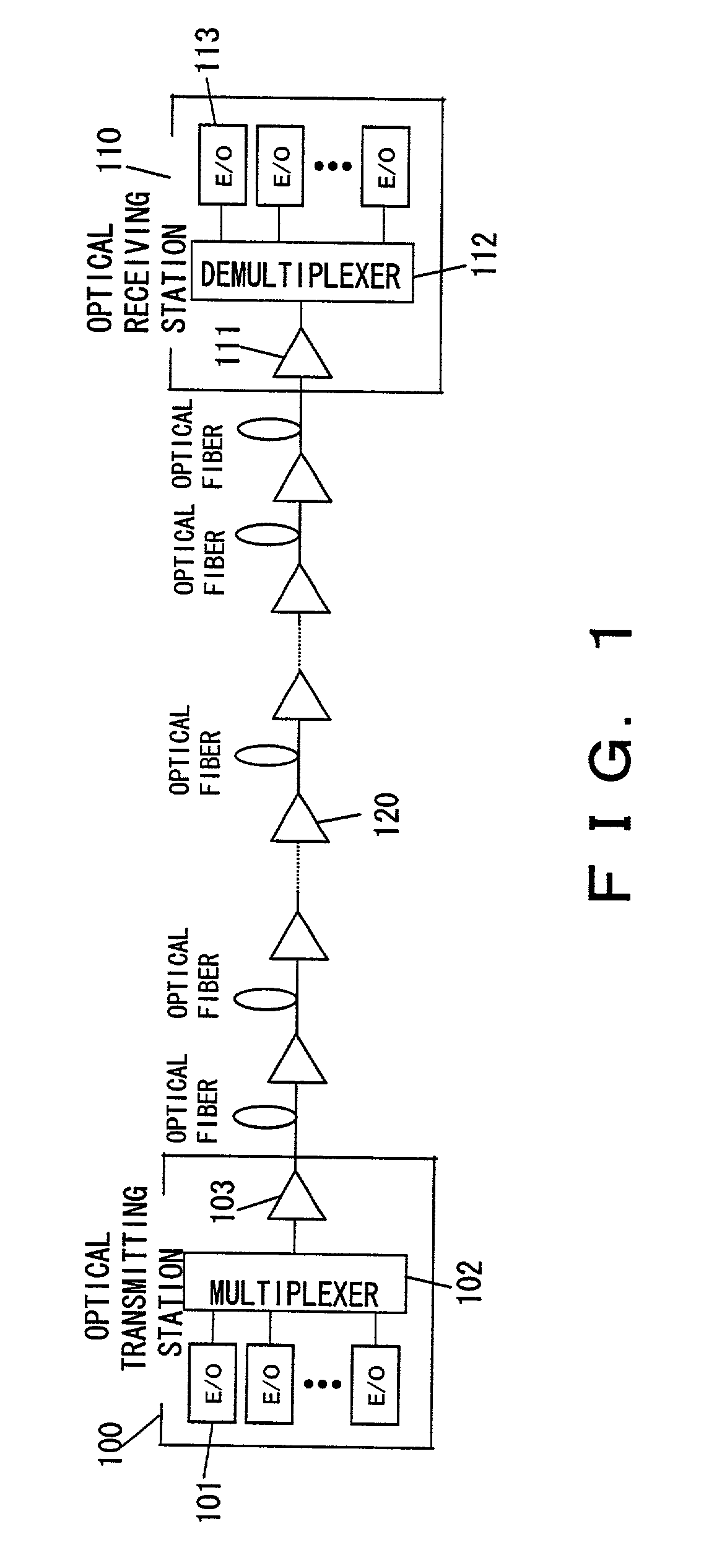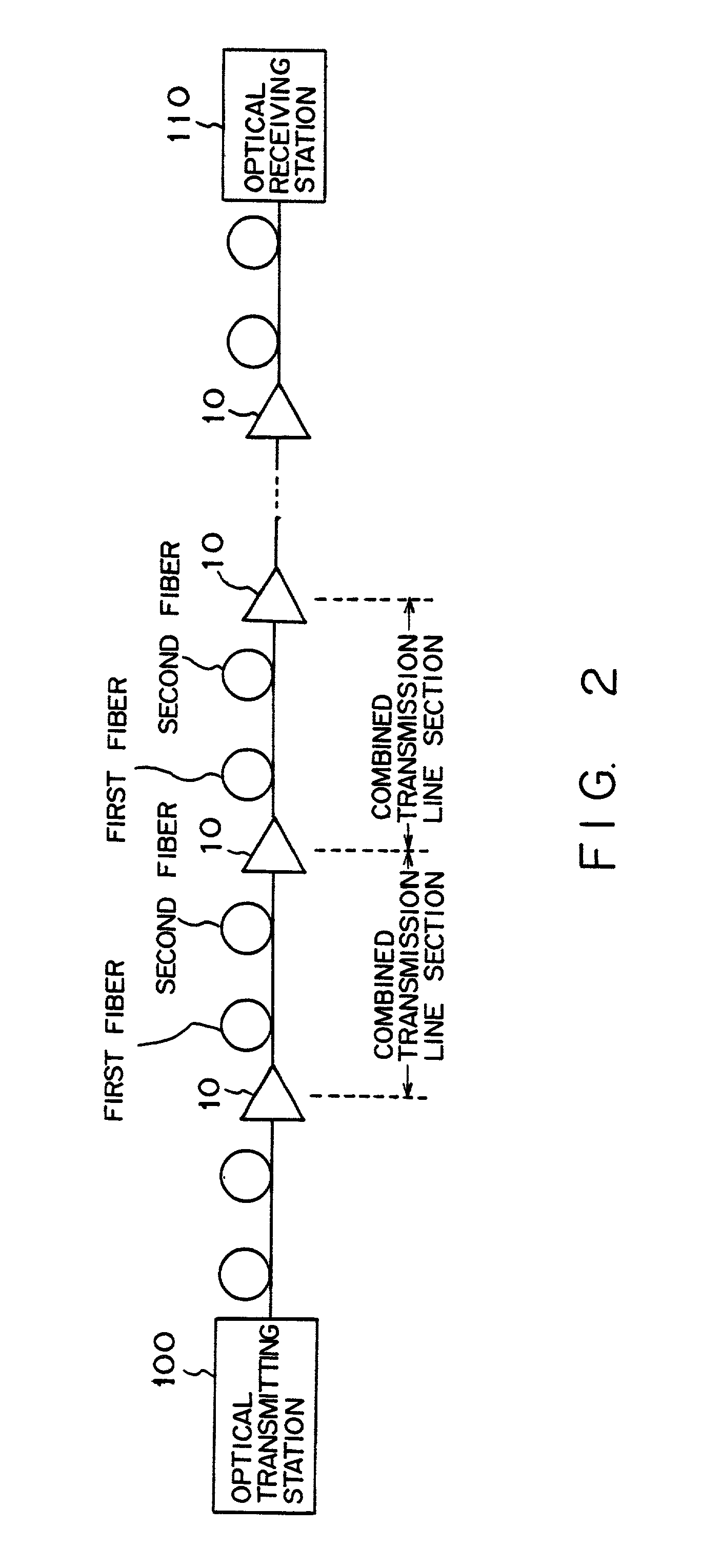Optical transmission system
a transmission system and optical transmission technology, applied in the field of optical transmission systems, can solve the problems of poor reliability of pump light sources, large non-linear effect, and inability to efficiently obtain raman gain, etc., and achieve the effects of low degradation, high raman gain efficiency, and small mode field diameter
- Summary
- Abstract
- Description
- Claims
- Application Information
AI Technical Summary
Benefits of technology
Problems solved by technology
Method used
Image
Examples
Embodiment Construction
[0052]The embodiments of the present invention are described below with reference to the drawings.
[0053]FIG. 2 shows the configuration of the optical transmission system in an embodiment of the present invention. The optical transmitting station 100 and optical receiving station 110 shown in FIG. 2 are basically the same as those shown in FIG. 1.
[0054]In a transmission line between the optical transmitting station 100 and optical receiving station 110, a plurality of optical repeaters 10 are provided. The plurality of optical repeaters 10 are basically located at equal intervals. Each optical repeater 10 has a function to generate pump light for Raman amplification utilizing the vibration of a molecule composing an optical fiber, which is a medium for transmitting signal light, and to supply the pump light to the transmission line.
[0055]Each of optical transmission lines between the optical transmitting station 100 and an optical repeater 10, between adjacent optical repeaters 10, a...
PUM
 Login to View More
Login to View More Abstract
Description
Claims
Application Information
 Login to View More
Login to View More - R&D
- Intellectual Property
- Life Sciences
- Materials
- Tech Scout
- Unparalleled Data Quality
- Higher Quality Content
- 60% Fewer Hallucinations
Browse by: Latest US Patents, China's latest patents, Technical Efficacy Thesaurus, Application Domain, Technology Topic, Popular Technical Reports.
© 2025 PatSnap. All rights reserved.Legal|Privacy policy|Modern Slavery Act Transparency Statement|Sitemap|About US| Contact US: help@patsnap.com



